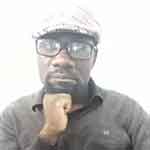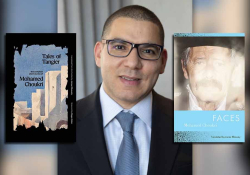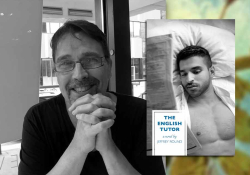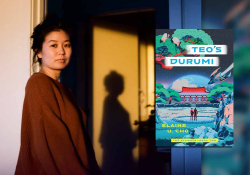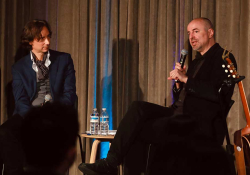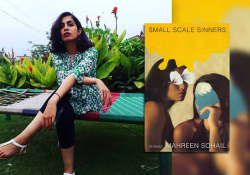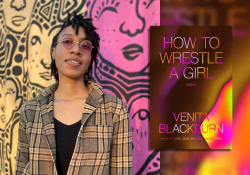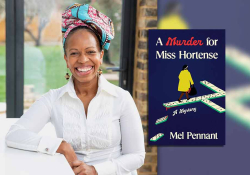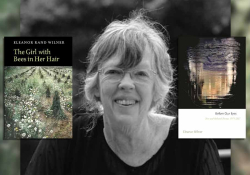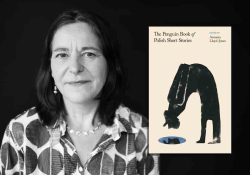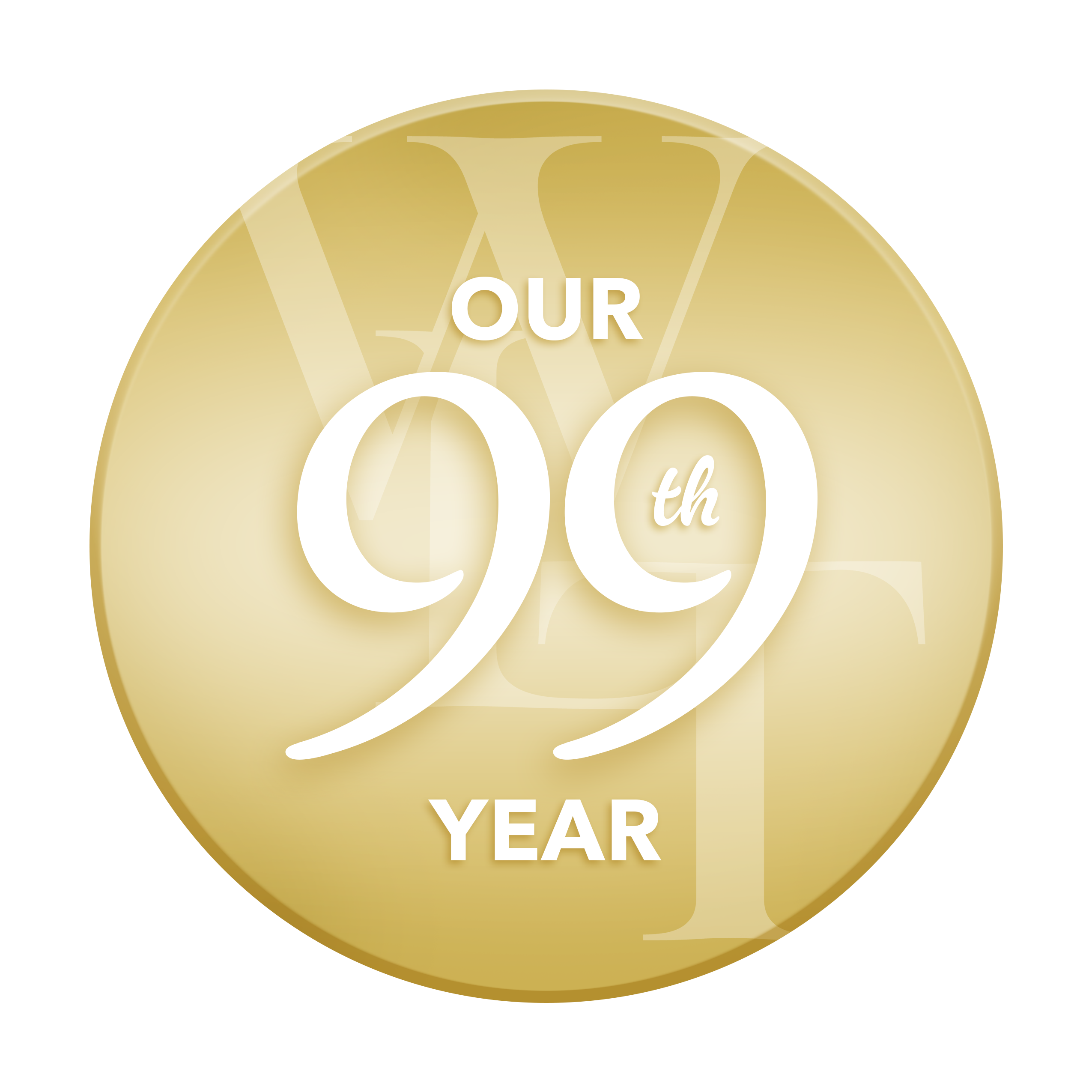Taming the Disorder: A Conversation with Megha Sood
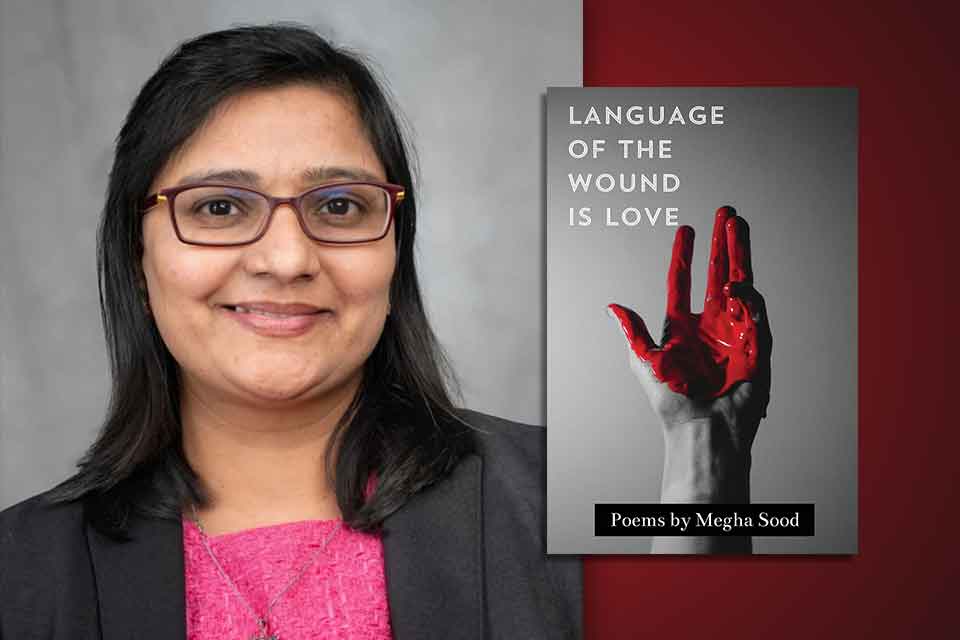
Megha Sood is an award-winning Asian American author, poet, editor, curator, and literary activist from New Jersey. She is the author of four poetry collections and has co-edited award-winning anthologies. Her works have been nominated numerous times for the Pushcart Prize and Best of the Net. She is a recipient of a “Certificate of Excellence” from Mayor Steven Fulop, Jersey City, and was recently inducted as an honored listee for the 125-year-old Marquis Who’s Who, sharing space with such global luminaries as Barack Obama, Malala Yousafzai, and Warren Buffett.
Her widely anthologized poems, essays, and other works discuss her experience as a first-generation immigrant and woman of color. Her co-edited anthology The Medusa Project and other works have been selected to be sent to the moon in 2025 as part of three separate rocket missions for the historical Lunar Codex in collaboration with NASA/SpaceX.
Mbizo Chirasha: Who is Megha Sood in terms of poetry, writing, and literature?
Megha Sood: I’m a self-taught artist passionate about growth, both as a writer and as a human being. I have pivoted from a twelve-year-long successful career as a project manager in business intelligence to my passion for creative writing and activism in the last seven years. I have worked with numerous international and national literary organizations in the capacity of poet, editor, curator, judge, and literary activist, which has led to the publication of four poetry collections, six co-edited anthologies, and nine-hundred-plus works in journals and magazines around the world. Writing poetry has always been a cathartic experience for me. My need to write poetry is coupled with a desire for self-expression and to connect with like-minded people in the creative community.
Poetry is an amalgamation of introspection and declaration for me. The strong effect of life and its introspection continues to be the impetus in much of my poetry.
Poetry is an amalgamation of introspection and declaration for me.
As rightly said in the words of Kevin Young, a chancellor of the Academy of American Poets, “Poetry should not only tell what you want to hear but also what you should know.” Poetry is not only cathartic to me; it also gives me the necessary medium to become a conduit of the unspoken and the unheard. Poetry not only taught me to express myself in creative ways but also helped me immortalize certain moments and precious memories in my life. To me, poetry is personal, and poetry is political.
Being a literary activist and a poet, I have contributed heavily to socially conscious anthologies that generate revenue for organizations supporting these issues. My work inclines toward literary activism, as generating awareness through my writings is my primary goal. Keeping with the mission to raise awareness about social inequalities and build communities of empowered creatives, I have co-edited two award-winning anthologies featuring the work of women creatives across the globe, namely The Kali Project (Indie Blue) and The Medusa Project (Mookychick). Both projects feature the voices of marginalized writers and provide them with a platform for showcasing their work. Both projects have received international recognition. The Kali Project has been included as a reference in the coveted Journal of Commonwealth Literature in addition to being a finalist in the Indie Excellence Book Awards.
Poetry has not only been my creative outlet but has also opened doors to various roles, including editor, curator, spoken-word jury member, workshop facilitator, and panelist with numerous academic and literary organizations globally. One of the notable projects includes the Life in Quarantine Project by CESTA (Center for Spatial and Textual Analysis) at Stanford University (2020–2022). Life in Quarantine: Witnessing the Global Pandemic is a digital humanities initiative sponsored by (CESTA). Launched in March 2020 by three doctoral students and a group of undergraduates, LiQ is an online community platform that addresses the transformations we’re experiencing in the age of Covid-19. At the core of the project is an open, online historical archive that houses personal written accounts in a wide range of languages from various countries. It has been presented in the Open Education Global Forum 2020 and received mention in Stanford Daily. Currently, the archive is being used as an open pedagogical resource for students, educators, governments, organizations, and businesses to promote cultural solidarity and global interconnectedness with inclusivity at its center.
As a writer of color, a woman, and a first-generation immigrant, social activist, and poet, my goal is to weave the fabric of my unique experiences and perspectives into my creative works. Through the power of words, I seek to amplify voices that are often marginalized and silenced in our society, shedding light on the intersectionality of my identity.
Through the power of words, I seek to amplify voices that are often marginalized and silenced in our society.
As a woman, I aim to challenge stereotypes and advocate for gender equality, using poetry as a vehicle for empowerment. In addition, as a first-generation immigrant, I seek to articulate the difficulty of navigating cultural clashes and coping with the challenges faced by those who forge new paths. In embracing the role of social activist, my writing seeks to inspire change and foster empathy, understanding, and a shared commitment to an inclusive and just world.
Chirasha: Your poetry embodies human experiences, the human soul, language, and the human body. Is that your literary ideologue, or are there any intentions behind your writing style?
Sood: I strongly believe that an artist’s role is not only about self-expression and introspection but also about documenting and acting as custodians of their culture for future generations. In the words of the great American poet, writer, and professor Sonia Sanchez, “All poets, all writers are political. They either maintain the status quo, or they say, ‘Something’s wrong, let’s change it for the better.’” I have always been driven, but this philosophy reflects strongly in my work.
I also see poetry as a gateway to other creative arts. Literary arts have always worked in tandem with other forms of visual and performing arts. No artist can exist in isolation, and poetry provides a method for interconnectedness, simultaneously providing you a safe space and catharsis.
Literary arts have always worked in tandem with other forms of visual and performing arts.
Spoken-word performances and poetry slams all across the globe have been strong evidence of the overlap of performance art with poetry. Ekphrastic poetry, a poem written in response to a piece of art, has provided enough evidence that literary and visual arts go hand in hand. Many of the artists in the creative arts community find themselves overlapping between the literary, visual, and performance arts. The normal graduation from one form of art to another is evident in various artists’ work during their lifetimes.
To me, poetry has always acted as a vehicle for social change and will continue to do so. To me, poetry is personal, and poetry is political. Poetry and the arts have always permeated social movements. It has a social relevance because it is effective as a means of activism, stimulating empathy, and empathy is integral to achieving social justice.
Chirasha: Through my reading of you and your body of work, I see you have garnered several accolades that include awards, fellowships, and other literary glitz. How would you describe the experiences and possibly the challenges you met on your way to literary stardom?
Sood: Thank you for your generous reading of my work. I consider myself more of a witness and a vessel than a star—someone who writes from the margins as a woman, person of color, and first-generation immigrant, and carries the mission to be the voice of the unspoken and unheard.
The journey has been deeply personal and, at times, emotionally and logistically demanding. Poetry came to me as a way of navigating angst and helplessness because of the social injustice in the world—affecting me directly and indirectly—and has since evolved into a space for resistance, healing, and advocacy.
Over time, recognitions like receiving the “Certificate of Excellence” from the Jersey City mayor, being inducted into the 125-year-old Marquis Who’s Who in America Registry as an Honored Listee, and working as a literary curator for Stanford University to create the pedagogical archive “Life in Quarantine” of two-hundred-plus poets across the world have strongly resonated with my mission of inclusivity, representation, and diversity in the arts community and have validated my mission as a literary activist.
Furthermore, receiving support from various literary organizations, namely VONA/Voices of the Nations Foundation, PEN Women, Sundress Academy of the Arts, Dodge Foundation, Kundiman, and Martha’s Vineyard Writing has further validated my mission and my intent to create something positive using poetry.
Being part of historic, landmark projects like the Lunar Codex—which not only carried my creative works to the moon as a digital payload but also the works of the other fifty-two womxn artists as part my co-edited anthology The Medusa Project—have validated not just my voice but the collective voices I strive to represent: immigrant women, South Asians, mothers, activists, and more. The Lunar Codex landing sites on the moon are now part of the Artemis Accord Heritage site, an accord signed by fifty-three countries to date, as part of the designated heritage of humanity, to be preserved for posterity.
But the path hasn’t been without its hurdles. As a woman of color and an immigrant writer balancing motherhood, a writing career, and editorial commitments, I’ve often had to carve space in an industry that can be exclusionary and saturated with gatekeeping. There’s a constant negotiation between creative work and systemic limitations.
Yet every challenge reaffirmed my purpose. I found strength in community, in collaboration, and in creating platforms for others through my editorial work. My activism and poetry are entwined—they feed each other. The true reward has never been the accolades but the moments when a reader at an event reaches out and says, “Your words made me feel seen.” That’s the heart of it all.
Poetry and the arts have always permeated social movements.
Chirasha: The title of your latest book is both paradoxical and allegorical: Language of the Wound Is Love. What is the driving force behind it?
Sood: Language of the Wound Is Love primarily deals with poems reflecting the pain and loss of first-generation immigrants losing their primary language while trying to fit their hyphenated identities. It highlights the fact that every wound inflicted because of gender- or sex-based discrimination, the feeling of loss and belonging in immigrant families, the pain of isolation during the pandemic, or discrimination based on gender or color has behind it a hunger for love. Its language is love. Love is the acceptance everyone is feverishly seeking in this topsy-turvy world, hence the title.
This collection is divided into five sections, namely “Language Lost,” “Blood on Our Hands,” “Every Pain Has a Story,” “A Collective State of Disbelief,” and “Brotherhood.” The opening section, “Language Lost,” deals with the poems reflecting the pain and loss of first-generation immigrants losing their primary language while trying to fit their hyphenated identities. It talks about the pain deeply experienced by people of color and other minorities living in a racist and xenophobic society. The collection depicts the isolation felt by the world living their version of realities during the pandemic and the long-term effects on social-emotional bonding.
This collection highlights my journey, gives it a voice, and strengthens the fact that every wound has a language that needs love and patience intermixed with sagacious interpretation.
Chirasha: Most of your books, poetry, and writings touch upon love, song and dance, and body. How many books have you written so far, and how have they been received?
Sood: Since starting my creative writing journey, I have been the author or co-author of eight award-winning books and anthologies. The four poetry collections and six co-edited anthologies embody my mission as a literary activist and are strongly informed by the social issues affecting us nationally and globally. The books and anthologies have been received warmly by the creative community as they were part of various panels, workshops, literary festivals, and were included in libraries, historical societies, and universities locally and globally.
Chirasha: How often do you read and write, and what kind of environment inspires you to both read and write?
Sood: Initially, my writing style conformed to the stream-of-consciousness style, where the deluge of words came uninterrupted, and I completed my poems with few edits. As I educate myself more about the craft, structure, and forms of poetry, the more I try to refine my poems. I always try to read my poems aloud to find mistakes in terms of rhythm and meter. This is one of the most profound pieces of advice I have learned from my fellow poets.
I have written in the most inappropriate places and at the most ungodly hours, so to speak. The inspiration can either come from a song on the radio, a sudden change in weather, or any poem/book I might be reading. Whenever inspiration strikes, I immediately jot down my thoughts in the Notepad app. During this initial phase, I don’t worry about grammar or syntax—I focus solely on capturing the raw emotion. Once the poem is complete, I turn my attention to refining its structure: shaping the form, adjusting line breaks and enjambments, crafting the title, and selecting the structure that best amplifies the poem’s emotional core.
As quoted by Friedrich Nietzsche, “One must still have chaos in oneself to be able to give birth to a dancing star.” To me, the most difficult part of writing poetry is taming that disorder in your mind in such a way that it gives birth to beautiful poetry rather than getting lost in the chaos and dissonance. Being an artist is a very vulnerable state to be in. Expressing my deep and vulnerable emotions to a judgmental world is the bravest form of expression.
